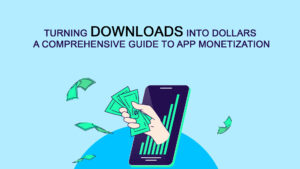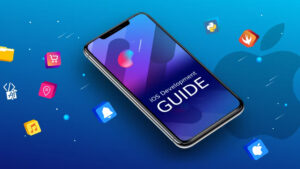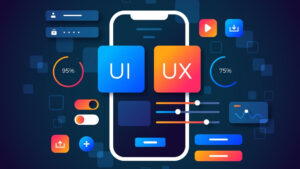Beyond the Hype: The Power of Case Studies & Projects in App Development
In the dynamic and fiercely competitive world of mobile app development, a compelling portfolio of case studies and projects is not just a nice-to-have; it’s an absolute necessity. For individuals, they are the tangible proof of skill. For agencies and studios, they are the bedrock of credibility, the ultimate sales tool, and a testament to problem-solving prowess. In 2025, amidst a digital landscape saturated with apps, it’s not enough to simply say you can build something; you must show what you’ve built and, more importantly, the impact it has had.
This comprehensive guide will delve into the profound significance of app development case studies and projects. We’ll explore why they are paramount, what constitutes a truly impactful case study, how to effectively showcase your work, and how leveraging them can propel your career, your agency, or your product to unprecedented success.
What are App Development Case Studies & Projects?
At their core, app development case studies and projects are narratives. They are structured stories that chronicle the journey of an app from conception to completion and beyond, detailing the challenges faced, the solutions implemented, the technologies utilized, and, critically, the measurable outcomes achieved.
- Projects are the raw output – the apps themselves, showcasing features and design.
- Case Studies elevate projects by adding context, methodology, and results, transforming them into powerful demonstrations of expertise and value.
Why Case Studies & Projects are Indispensable
- Demonstrate Expertise & Credibility: In an industry teeming with promises, case studies offer tangible evidence of your capabilities. They show that you’ve successfully navigated real-world challenges, delivered on client expectations, and possess the technical acumen to build effective solutions.
- Build Trust & Confidence: Prospective clients and employers want to mitigate risk. A well-documented case study builds trust by showcasing your process, problem-solving skills, and successful track record. It answers the crucial question: “Can they actually do what they say they can?”
- Showcase Problem-Solving Abilities: Apps are built to solve problems. Case studies provide a platform to articulate the specific challenges an app addressed and how your team strategically engineered a solution, highlighting your analytical and innovative thinking.
- Highlight Measurable Impact: Beyond aesthetics and functionality, businesses care about ROI. Case studies allow you to present quantifiable results – increased user engagement, higher conversion rates, reduced operational costs, growth in revenue – directly linking your work to business success.
- Attract Relevant Clients/Opportunities: By showcasing projects in specific niches or with particular technologies, you signal your expertise to clients seeking similar solutions, attracting more qualified leads. If you specialize in healthcare apps, your healthcare case studies will speak volumes.
- Facilitate Learning & Improvement: Internally, dissecting past projects allows teams to analyze what worked, what didn’t, and identify areas for process improvement, skill development, and innovation in future endeavors.
- Serve as a Marketing & Sales Tool: A compelling case study is far more persuasive than a generic sales pitch. It provides concrete examples that resonate with potential clients and can be shared across websites, presentations, and social media.
- Differentiate Yourself/Your Agency: In a crowded market, unique case studies highlighting innovative approaches or niche expertise can set you apart from competitors.
Anatomy of a Compelling App Development Case Study
A strong case study tells a story, and every good story has a clear structure. Here are the essential components:
- Project Title & Client (or Project Name): Clear, concise, and engaging.
- Executive Summary/Overview (The Hook): A brief, impactful summary of the project, its main challenge, the solution, and the key results. This hooks the reader.
- The Challenge/Problem:
- What specific pain points or market gaps did the client face?
- What business objectives needed to be met?
- Quantify the problem if possible (e.g., “manual processes led to a 30% error rate,” “low customer engagement due to outdated system”).
- The Solution (Your Approach):
- Strategy: Explain your proposed solution. What app type? (Native, cross-platform?) Why?
- Key Features: Detail the main functionalities developed.
- Technologies Used: List the core tech stack (e.g., Swift/Kotlin, React Native/Flutter, Node.js/Python, Firebase/AWS, GraphQL/REST).
- Design & UX Principles: How did you approach the UI/UX to ensure user-centricity and intuitive flow? Mention specific design challenges overcome.
- Development Process: Briefly describe your agile methodology, testing protocols, and collaboration tools.
- Implementation & Execution:
- Highlight any unique technical challenges encountered during development and how they were overcome.
- Showcase innovative solutions or complex integrations.
- Mention specific team contributions if relevant.
- Results & Impact (The Metrics!): This is the most crucial section. Quantify your success.
- Business Outcomes: Increased revenue, cost savings, improved efficiency, higher customer satisfaction, reduced support calls.
- User Metrics: User acquisition numbers, engagement rates (DAU/MAU), retention rates, conversion rates, average session duration.
- Technical Performance: App load times, crash-free sessions, scalability metrics.
- Qualitative Feedback: Testimonials from the client or key users.
- Visual Elements:
- High-quality screenshots of the app (before & after if applicable).
- App preview videos or demo reels.
- Flowcharts or architectural diagrams (for complex solutions).
- Infographics to display metrics.
- Client Testimonial: A direct quote from the client endorsing your work. Powerful social proof.
- Lessons Learned & Future Outlook (Optional but valuable): What did your team learn? What are the plans for future iterations or phases of the project?
Types of App Projects That Make Great Case Studies
Every app project has the potential for a compelling case study, but some types lend themselves particularly well:
- Enterprise Solutions: Apps that streamline internal operations, improve employee productivity, or enhance B2B communication.
- Consumer-Facing Apps (High Engagement): Social media apps, entertainment platforms, e-commerce apps, or utility tools that achieve significant user adoption and retention.
- Healthcare/Fintech Apps: Projects in regulated industries that demonstrate adherence to compliance, robust security, and complex data handling.
- AI/ML Integrated Apps: Solutions that leverage artificial intelligence for personalization, automation, or intelligent features.
- IoT & Hardware Integrated Apps: Projects that connect mobile apps to physical devices (e.g., smart home, wearables, industrial IoT).
- Cross-Platform Success Stories: Projects that demonstrate efficient development and consistent UX across iOS and Android using frameworks like Flutter or React Native.
- Niche Market Disruptors: Apps that successfully carved out a new market or significantly improved an existing service within a specific niche.
- MVP to Scale-Up Stories: Documenting the journey from a minimal viable product to a fully scaled, feature-rich application.
Hypothetical Case Studies: Bringing the Concepts to Life
Let’s illustrate the concept with three diverse hypothetical case studies, demonstrating the depth and impact a well-structured narrative can provide.
Case Study 1: “SwiftMeal” – Revolutionizing Local Food Delivery for Hyper-Local Restaurants
Client: SwiftBite Technologies (A FoodTech Startup) Industry: Food & Beverage, On-Demand Delivery Platform: iOS & Android (Flutter)
Executive Summary: SwiftBite Technologies partnered with [Your Agency Name] to develop “SwiftMeal,” a user-friendly and efficient cross-platform mobile application designed to empower hyper-local restaurants with their own direct online ordering and delivery system, bypassing expensive third-party aggregators. The solution led to a 25% increase in direct online orders for pilot restaurants and a significant reduction in commission fees.
The Challenge: Local restaurants struggled with high commission fees (up to 30%) from dominant food delivery platforms, severely impacting their profit margins. They lacked the technical infrastructure and marketing reach to build and manage their own robust online ordering and delivery system, leading to dependency on aggregators and limited control over customer data.
The Solution (Our Approach): We proposed a comprehensive, white-label ready mobile application built with Flutter to ensure a consistent experience on both iOS and Android with a single codebase, optimizing development time and cost. The solution comprised:
- User-Facing App: Intuitive UI/UX for seamless menu Browse, order customization, secure payment integration (Stripe), and real-time order tracking.
- Restaurant Partner App: A simplified interface for restaurants to manage menus, update availability, accept/decline orders, and track deliveries.
- Driver Partner App: Efficient routing, order pickup/delivery management, and in-app communication with restaurants and customers.
- Admin Dashboard (Web): A central portal for SwiftBite to manage restaurants, drivers, analyze order data, and customize app settings.
Key Features:
- Personalized Recommendations: AI-driven suggestions based on order history.
- Group Ordering: Users can easily create group orders and share carts.
- Customizable Loyalty Program: Integrated rewards system for restaurants.
- Real-time GPS Tracking: For both customers and restaurants.
- Integrated Chat: Direct communication between customers, restaurants, and drivers.
Technologies Used:
- Frontend: Flutter (Dart)
- Backend: Node.js (Express.js) for microservices architecture
- Database: PostgreSQL for relational data, MongoDB for flexible menu data
- Cloud Platform: AWS (EC2, RDS, S3, Lambda for serverless functions)
- APIs: Stripe for Payments, Google Maps API for Location & Routing, Twilio for SMS notifications.
Implementation & Execution: We adopted an Agile SCRUM methodology, delivering iterative sprints focusing on core functionalities first. A key challenge was designing a flexible menu management system that could accommodate diverse restaurant types and complex customization options. We solved this by implementing a schema-less structure within MongoDB for menu items, allowing for dynamic attribute management via the Restaurant Partner App. Secure data handling for payment information was prioritized with end-to-end encryption and tokenization using Stripe’s robust APIs.
Results & Impact:
- 25% increase in direct online orders for pilot restaurants within 3 months post-launch.
- 18% reduction in average commission fees paid by restaurants, significantly boosting their profit margins.
- 4.7/5 stars average user rating on both App Stores (within 6 months).
- 85% order completion rate within the estimated delivery time.
- Scalability: The microservices architecture successfully handled a 200% increase in concurrent users during peak hours without performance degradation.
Client Testimonial: “Working with [Your Agency Name] on SwiftMeal was transformative. They truly understood our vision to empower local businesses. The app is incredibly stable, intuitive, and the direct ordering feature has been a game-changer for our restaurant partners. Their Flutter expertise delivered a beautiful, high-performing app on both platforms, quickly and efficiently.” – Aisha Sharma, CEO, SwiftBite Technologies.
Case Study 2: “VitalFlow” – Secure Remote Patient Monitoring for Chronic Conditions
Client: MediCare Innovations (Healthcare Provider) Industry: Healthcare, Remote Patient Monitoring Platform: iOS Native (Swift), Android Native (Kotlin)
Executive Summary: MediCare Innovations engaged [Your Agency Name] to develop “VitalFlow,” a secure, HIPAA-compliant mobile application enabling remote monitoring of patients with chronic conditions. The app facilitated seamless data collection from medical devices, improved patient adherence to care plans, and reduced hospital readmissions by 15% through proactive alerts.
The Challenge: Managing chronic conditions remotely was inefficient, relying on manual data entry and infrequent clinic visits. This led to poor patient adherence, delayed intervention for critical health changes, and increased hospital readmission rates, creating a burden on both patients and healthcare systems. Ensuring data security and compliance with stringent healthcare regulations (HIPAA in the US, GDPR in Europe, India’s PDP Bill) was paramount.
The Solution (Our Approach): We developed native iOS and Android applications to ensure optimal performance, robust security, and seamless integration with platform-specific health APIs. The solution focused on:
- Secure Data Ingestion: Integration with Bluetooth-enabled medical devices (blood pressure monitors, glucometers, smart scales) for automated, secure data transfer.
- Personalized Care Plans: Patients receive customized medication reminders, exercise routines, and dietary guidelines.
- Symptom & Mood Tracking: Intuitive logging interfaces for subjective patient data.
- Alert & Notification System: Real-time alerts for patients (e.g., medication reminders) and healthcare providers (e.g., critical vital sign deviations).
- Telehealth Integration: Secure video conferencing for virtual consultations.
- Caregiver Access: Secure, limited access for approved family members or caregivers.
Technologies Used:
- Frontend: Swift (iOS), Kotlin (Android)
- Backend: Java (Spring Boot) for enterprise-grade stability and security
- Database: PostgreSQL (for strict ACID compliance and structured patient data)
- Cloud Platform: Microsoft Azure (Azure App Service, Azure SQL Database, Azure Key Vault for secrets management)
- APIs: Bluetooth Low Energy (BLE) for device connectivity, Twilio for secure telehealth video, custom HL7/FHIR compliant APIs for EMR integration.
Implementation & Execution: Security and compliance were at the forefront of every decision. We implemented end-to-end encryption, multi-factor authentication, and robust access controls. Our development process included rigorous security audits, penetration testing, and adherence to industry best practices (e.g., OWASP Mobile Top 10). A significant technical challenge was ensuring reliable, low-power Bluetooth connectivity across a wide range of medical devices, which we solved through extensive device compatibility testing and optimized BLE communication protocols.
Results & Impact:
- 15% reduction in hospital readmissions for patients using VitalFlow over a 6-month period.
- 92% patient adherence rate to medication schedules (verified through app data).
- Increased patient engagement by 40% compared to traditional monitoring methods.
- Seamless integration with existing EMR systems, streamlining healthcare provider workflows.
- Achieved full HIPAA and GDPR compliance, passing all security audits.
Client Testimonial: “VitalFlow has transformed how we deliver care to our chronic patients. [Your Agency Name] not only built an incredibly secure and reliable application but also navigated the complexities of healthcare compliance with ease. The impact on patient outcomes and our operational efficiency has been profound.” – Dr. Priya Desai, Chief Medical Officer, MediCare Innovations.
Case Study 3: “EcoTrail” – Gamified Environmental Education & Citizen Science
Client: GreenEarth Foundation (Non-profit Organization) Industry: Education, Environmental Science, Gamification Platform: Cross-Platform (React Native)
Executive Summary: GreenEarth Foundation partnered with [Your Agency Name] to create “EcoTrail,” a gamified mobile application designed to educate users about local ecosystems and facilitate citizen science data collection. The app successfully engaged over 50,000 active users in its first year, contributing to significant increases in environmental awareness and valuable ecological data submissions.
The Challenge: Engaging the general public, especially younger demographics, in environmental education and citizen science initiatives proved challenging due to traditional, often dry, methods. The foundation needed an innovative, accessible, and fun way to inspire environmental stewardship and gather crucial local ecological data at scale.
The Solution (Our Approach): We proposed “EcoTrail,” a React Native application that combines engaging gamification mechanics with practical citizen science tools. React Native was chosen for its ability to deliver a native-like experience on both iOS and Android while accelerating development and allowing the non-profit to manage a single codebase.
- Interactive Learning Modules: Bite-sized lessons on local flora, fauna, and environmental issues, presented through rich media.
- Gamified Missions: Users complete real-world challenges (e.g., “Identify 5 native trees,” “Report an invasive species,” “Organize a local cleanup”).
- Citizen Science Data Submission: Users can upload photos, GPS locations, and observations of plant/animal sightings or environmental concerns.
- Achievement & Leaderboard System: Rewards for completing missions and contributing data, fostering healthy competition.
- Community Features: Users can share their findings, connect with local environmental groups, and organize events.
- AI-Powered Identification: Integrated machine learning models to help users identify species from photos.
Technologies Used:
- Frontend: React Native (JavaScript/TypeScript)
- Backend: Firebase (Firestore for real-time data, Authentication, Storage for images, Cloud Functions for AI triggers)
- AI/ML: Google Cloud Vision API for image recognition, custom TensorFlow Lite models integrated on-device for faster species identification.
- APIs: Google Maps API, custom APIs for integrating with scientific databases.
Implementation & Execution: A key success factor was the iterative design process that involved testing gamification mechanics with focus groups to ensure maximum engagement. Integrating the AI-powered species identification was a complex task, requiring careful selection and training of machine learning models to ensure accuracy for local flora and fauna. We leveraged Firebase Cloud Functions to trigger backend AI processing when users uploaded photos, providing rapid feedback. React Native’s Hot Reload feature significantly sped up UI/UX iteration during development.
Results & Impact:
- 50,000+ active users within the first year of launch.
- 30% increase in environmental awareness among active users (based on pre/post-app usage surveys).
- 10,000+ validated ecological data points submitted by citizen scientists, contributing to local conservation efforts.
- 90% mission completion rate for users who started at least one mission.
- Successful fundraising tool, as the app demonstrated clear impact for potential donors.
Client Testimonial: “[Your Agency Name] helped us bring environmental education into the 21st century! EcoTrail has been instrumental in mobilizing our community and gathering invaluable data. Their expertise in gamification and React Native delivered an incredibly engaging and impactful app on a non-profit budget.” – David Chen, Program Director, GreenEarth Foundation.
Leveraging Your Case Studies for Maximum Impact
Once crafted, don’t let your case studies gather digital dust. Actively use them:
- Website Portfolio: Feature them prominently on your website’s portfolio or “Work” section.
- Sales & Marketing Collateral: Include snippets or full case studies in pitch decks, brochures, and email marketing campaigns.
- Social Media: Share highlights, infographics, and key results across LinkedIn, X (Twitter), and other platforms.
- Blog Content: Write blog posts detailing specific challenges or solutions from a case study, linking back to the full version.
- Press & PR: Use successful case studies as compelling narratives for press releases or media pitches.
- Presentations & Conferences: Use them as concrete examples during industry talks or webinars.
- Recruitment: Showcase your team’s achievements to attract top talent.
Conclusion
In the fiercely competitive app development landscape of 2025, your ability to articulate your successes is as important as your ability to code. Case studies and projects are more than just a list of features; they are compelling narratives that demonstrate your problem-solving prowess, technical expertise, and, most importantly, your proven ability to deliver tangible, measurable results.
By meticulously documenting your app development journeys, quantifying your impact, and strategically showcasing your work, you empower your brand, build unwavering trust, and unlock unparalleled opportunities for growth. Invest in your case studies; they are the most powerful testament to your past achievements and the most compelling promise of your future potential.




